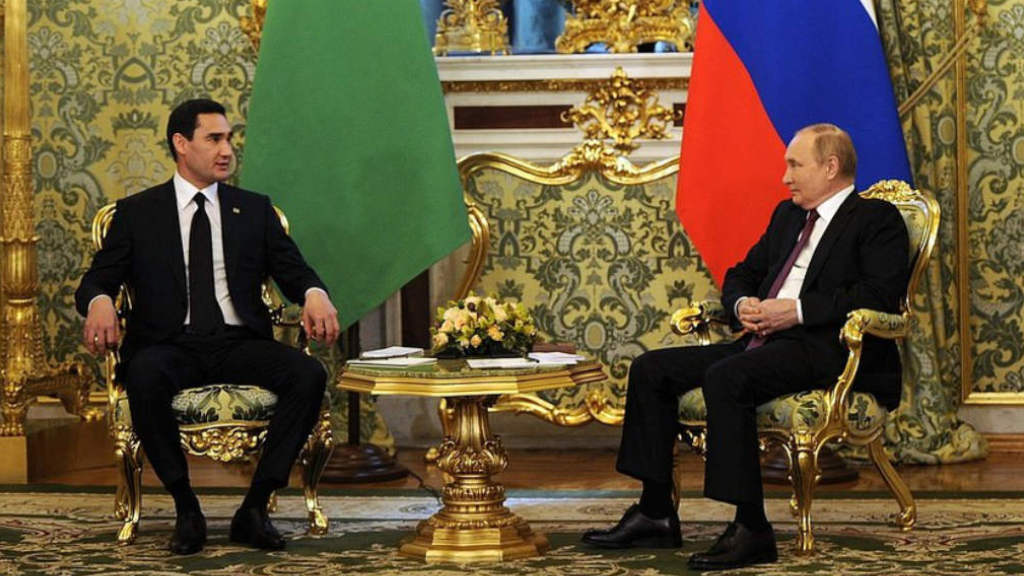The regional Ukraine conflict, initially a European issue, has now evolved into a new, generally unacknowledged phase that is revealing in its geographic spread and aims – it has morphed into a global economic war, essentially pitting the United States against the rest of the world. It is essentially demanding tributes from its allies, such as the European Union, and compliance with its wishes from the BRICS nations.
Ukraine has become sidelined in a global struggle for economic dominance. However, the US appears not to be getting all its own way. In this article we examine the current stages of this conflict and compare the opposing sides.
The Nexus Point: Ukraine

Although the Ukraine conflict has its origins in cultural and basic military conflict, it changed in nature from being essentially a small local civil war from 2014 involving the Donbass region to become a full military battle pitting US and EU forces against Russia. Using NATO as the uniting shield, the conflict became a strange beast – with all the opposing parties denying they were involved in a direct conflict with Russia when it became apparent that both on economic and military terms, they were.
Impact on the European Union

To date, the NATO allies have spent an estimated €50 billion per annum on supporting Ukraine, with additional costs, especially to the European Union economy estimated at about €1 trillion in the form of increased energy supply chain overheads as of mid-July 2025 as a result of sanctions. In addition, the European Union appears to remain committed to much of this annual expenditure, with defence budgets now increased to 5% of total GDP – at least an extra €700 billion annually. It may not stop there. Energy costs will remain higher than the previously less expensive Russian-sourced supplies, while concerns have also been raised about the suitability of European logistics, transport and communications infrastructure.
It is hard to pin-point accurate figures, and the EU’s own publicly available accounts are often bewildering in what they do and do not say, ending up being an undecipherable mix of financial percentages without providing any baseline data. But what appears obvious is that the EU has gotten into a conflict whose expense levels are well into the trillions of euros, with higher associated costs than pre-2022 now essentially a built-in part of the overall European economy.
In addition to taking this financial hit, EU economic development has also been stopped in its tracks: in 2021 overall EU economic growth was in excess of 5%, for 2025 it is expected to average out at 1%. Should that 5% growth rate have been maintained, this represents a loss to the EU economy in the period 2021-2025 of about €5 trillion. That is equivalent to about 25% of the current total EU GDP of €20 trillion. This gap will continue to grow in terms of lost development and increased expenditure – a classic double-whammy. This is why predictions such as the EU being caught up by at present smaller economic blocs – such as the Commonwealth of Independent States – begin to look increasingly accurate. And all this for a relatively small country that is not an EU member.
Impact on the United States

While the United States has contributed about US$182.8 billion to Ukraine (both via NATO and its own efforts) there is a significant difference in the impact on its economy. Much of this will have been offset – instead providing an economic boost – by two elements. Much of this money was used to reinvest in US military production, which was then resold, while US gas exports to the EU rose from US$12.2 billion in 2021 to a recently committed, but possibly unsustainable US$250 billion per annum from 2025. In short, the Ukraine conflict has proven to be good business for the United States. It has secured a position as primary energy supplier to the European Union, given its military-based economy a significant boost, and has both decreased its budgetary commitment to NATO and, from March, has ceased funding Ukraine. The positive economic performance of the United States has been in stark contrast to that of the European Union. The United States GDP has grown from US$23.68 trillion in 2021 to a projected US$30 trillion by the end of 2025.
Impact on Russia

Russia by all accounts has weathered the economic storm rather well, although understandably there have been significant stresses – the loss of €300 billion of sovereign assets, and an economic journey that has been turbulent to say the least. At present though, Russia appears to have overcome the odds – its economy has grown from US$1.89 trillion in 2021 to an estimated US$2.8 trillion in 2025. In PPP terms, which is used when comparing economies, the Russian economy has risen to become the fourth largest in the world and equates to a purchasing power of US$7.67 trillion. Russia has managed to completely restructure its supply chains, has absorbed the impact of over 20,000 sanctions, and has developed an increasingly sanctions-proof economy that can now operate independently of both the United States and European Union. That cannot be said of either the United States nor Europe. This simple fact is where the looming BRICS economic conflict with the United States is now beginning.
Ukraine Conflict Goals & Achievements

It now appears that the European Union, supported by the United States, became involved in the Ukraine conflict for expansionist principles, both by absorbing Ukraine and weakening Russia to allow Brussels to negotiate better trade and investment terms in what appears to have been an attempt at instigated a regime change in Moscow to allow a more pro-European government to take power. There are numerous pointers towards this, multiple, on-going references for Ukraine to join the European Union, the same for the removal of Vladimir Putin as Russian President and numerous calls for the breakup of Russia as a single country. More on that concept here and here.
The benefits for Europe and the United States would have been substantial, and Brussels apparently bought into this concept. Unfortunately for Brussels, it hasn’t worked out the way it was intended to, and attempting to drive these types of geopolitical changes has proven far beyond the EU’s capabilities. But this is not true of the United States. While its initial goals of diminishing Russia might have changed from the Biden era rhetoric of reducing the ruble to rubble – the overall aims of the United States appear to remain intact. But what has changed is that the economic conflict now involves not just Russia, but the BRICS.
The United States vs The BRICS

While the United States has moved on in terms of providing military support to defeat Russia on Ukraine’s battlefields, its economic efforts to impose at least restrictions on Russia continue. However, this has now spilled over to include the BRICS countries, which may not have been the original 2022 intention under President Biden. It certainly seems to be so under President Trump, in terms of rhetoric at least. Whether this breaks out into a longer-term battle of economic will remains to be seen, but there are significant signs that the United States, under Trump, is continuing to press its superiority if not in military terms, then certainly in economic ones.
Nominal GDP
It is wise to refer back at this point to the US economy, which unlike the European Union, has not been damaged by the Ukraine conflict and has instead been doing well. It remains the world’s largest economy in nominal GDP terms and will probably breach the US$30 trillion barrier this year. In nominal terms, it is roughly 30% larger than the Chinese economy. That compares to the big four BRICS economies (Brazil, Russia, India, China) with a nominal GDP of US$27 trillion.
Purchasing Power Parity
This apparent US economic dominance changes however, when the calculations involve Purchasing Power Parity (PPP) capabilities. This is an important economic statistic and is used when comparing economies. The difference between nominal and PPP GDP measurements is that Nominal GDP and GDP Purchasing Power Parity (PPP) are both measures of a country’s economic output, but they differ in how they account for price differences across countries. Nominal GDP uses current market exchange rates, while GDP (PPP) adjusts for differences in the cost of goods and services, providing a more accurate comparison of living standards. It is unknown whether President Trump or his economic advisors use nominal or PPP calculations when calculating the effect of sanctions. It should be pointed out that global institutions such as the World Bank and IMF all use the PPP data when analysing economic impacts, and especially when it comes to comparisons with the United States economy.
Under PPP calculations, as these use the US dollar as the base, the US GDP remains the same at about US$30 trillion. But the BRICS big four as mentioned above now reaches over US$70 trillion – more than double the US value.
When the BRICS full membership of ten countries (Brazil, Russia, India, China, South Africa, Egypt, United Arab Emirates, Ethiopia, Iran, and Indonesia) is taken into consideration, that figure then becomes US$84.75 trillion – nearly three times larger.
Trump’s BRICS Gamble

This means that whichever way one looks at it, the United States is going to have a battle on its hands to bring the BRICS under its will. In nominal GDP terms, the US is still economically larger, but in PPP it is just 30% of the BRICS total. The BRICS economies do not appear to be complying with Trump’s wishes. Brazil is a relatively small economy compared with the United States, yet Brazilian President Lula has already stated in response to Trump’s imposition of 50% tariffs on Brazilian imports that the country has already diversified its supply chains away from the United States.
The BRICS economies also appear to be helping each other overcome trade restrictions imposed by higher US tariffs. China for example has just fast-tracked the application processes for over 200 Brazilian investors throughout the country.
India too, has rejected any moves to discontinue its purchases of Russian oil, even after the imposition of US tariffs of 25% – with these being increased by a new Trump executive to 50% as from August 6th. That may test India’s resolve, but not unreasonably, India has pointed out that the US itself continues to trade with Russia in amounts that would have been enough for Moscow to have purchased 660 T-90 tanks. While there will be some domestic political pain for India, as we discussed in some detail here, it is unlikely to back down.
China has also refused to bend to Trump’s will, with President Xi Jinping saying that China “will not be bullied” China continues to face the highest tariff burden among America’s major trading partners, with China’s effective tariff rate at 41.4%, up from 10.7% at the end of last year. It is also worth noting that senior Indian officials have just visited Moscow and the Indian Prime Minister Modi is to visit Beijing. None have as yet, any plans to meet with President Trump.
Further cooperation is also beginning elsewhere, with BRICS member Indonesia looking to sell its shrimp products to China instead of the United States. Indonesia has been hit with 19% tariffs on seafood products; 60% of Indonesia’s total production was exported to the United States. That will now be absorbed by Chinese consumption.
Apart from economic superiority, the main advantages of the BRICS group is its sheer size – the ten BRICS full member nations possess about 46% of total global agricultural land and have a population of about 4 billion people. That stacks up against the United States with 13.7% of total global agricultural land and a population of 340 million. These figures suggest that the BRICS has the capacity to absorb a move away from the US markets, while the United States – especially when viewed in conjunction with the European Union, has enough capacity to maintain its wealth as a more protected US/EU bloc.
The End Game

While Trump may the vociferous in his criticism of BRICS – he has challenged the group as being a threat to the US dollar – the overall goal appears to be a short-medium term tariff based conflict designed to eject the BRICS nations from the United States and eventually the European Union, and establish a US/EU focused group while leaving the BRICS to develop their own supply chains and markets.
The EU also appears to be onboard with this concept, although it also appears they have little choice: they have essentially committed themselves to the United States, while a coming battle with China over tariffs additionally appears to be brewing.
If correct, this confirms the development not of a multi-polar global society, but of a partial one. The United States and the European Union on one hand, and the BRICS plus, with most of the rest of the world on the other. That has significant implications for the BRICS countries, and the Global South with not just a realignment of a ‘Pivot To BRICS’ occurring but the additional institutional need of regulatory and fair governance. Beijing and Moscow, along with Delhi, will get the chance to show just how fair and open they are prepared to be in running the rest of the world without trade or economic reliance on Washington or Brussels.
Further Reading
Russia Proposes A Permanent BRICS Seat At The G20 As Global South Gains Influence: Analysis





